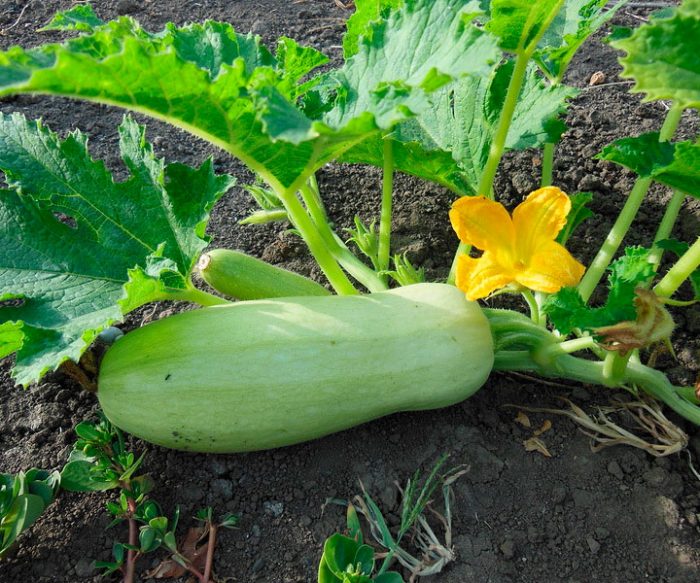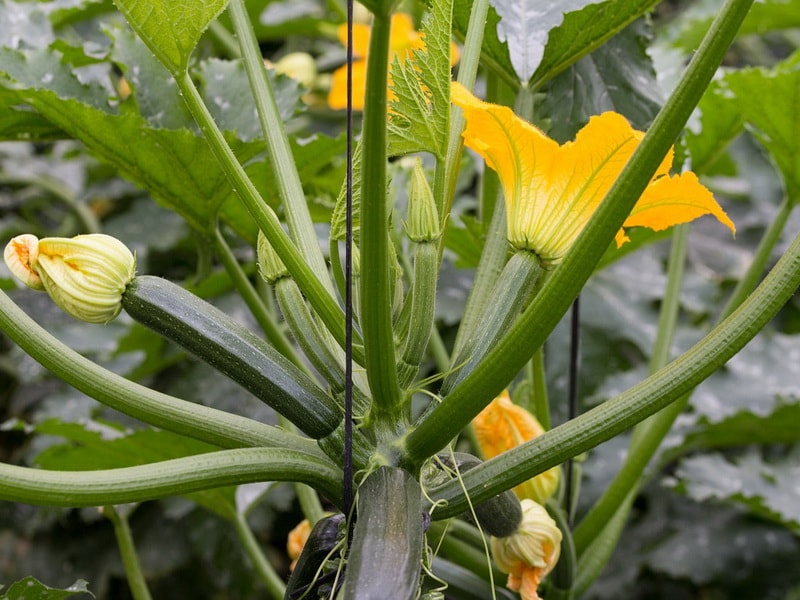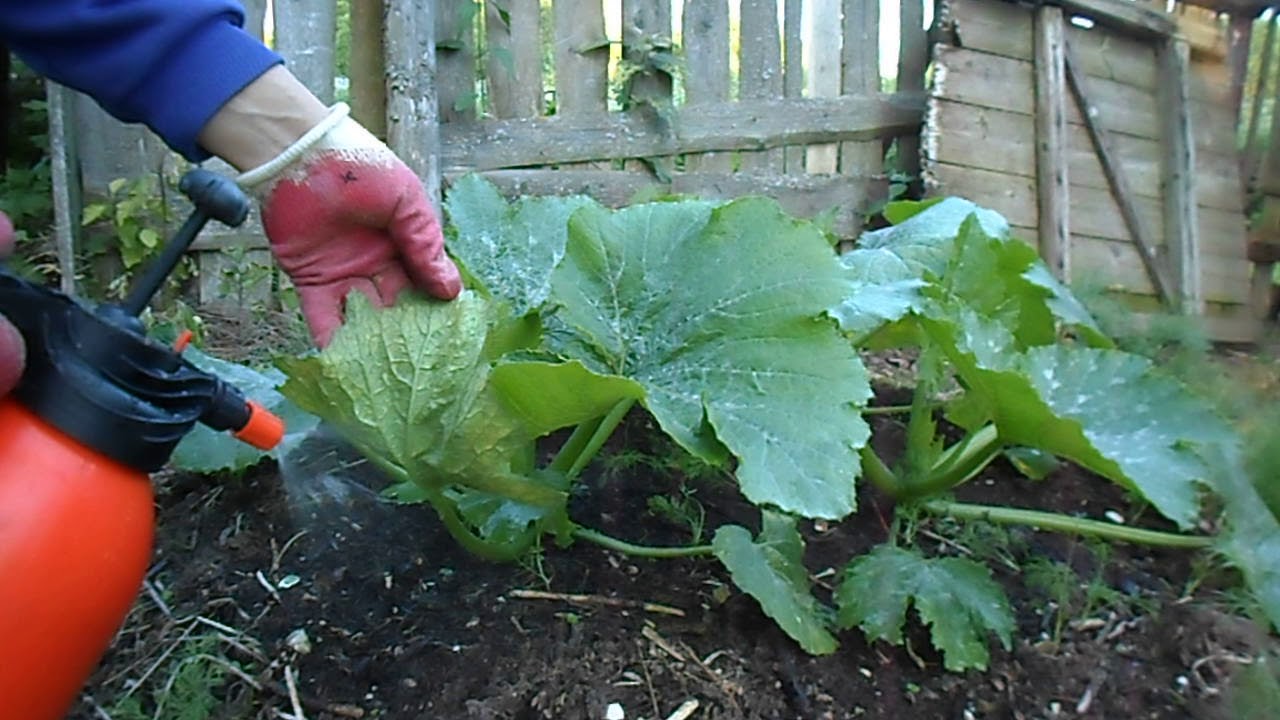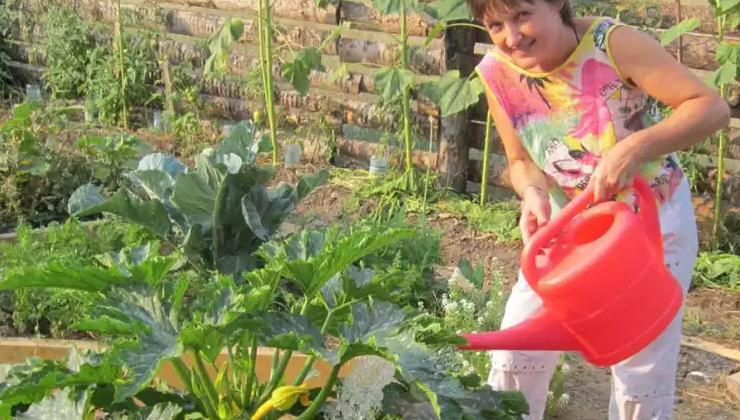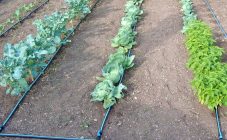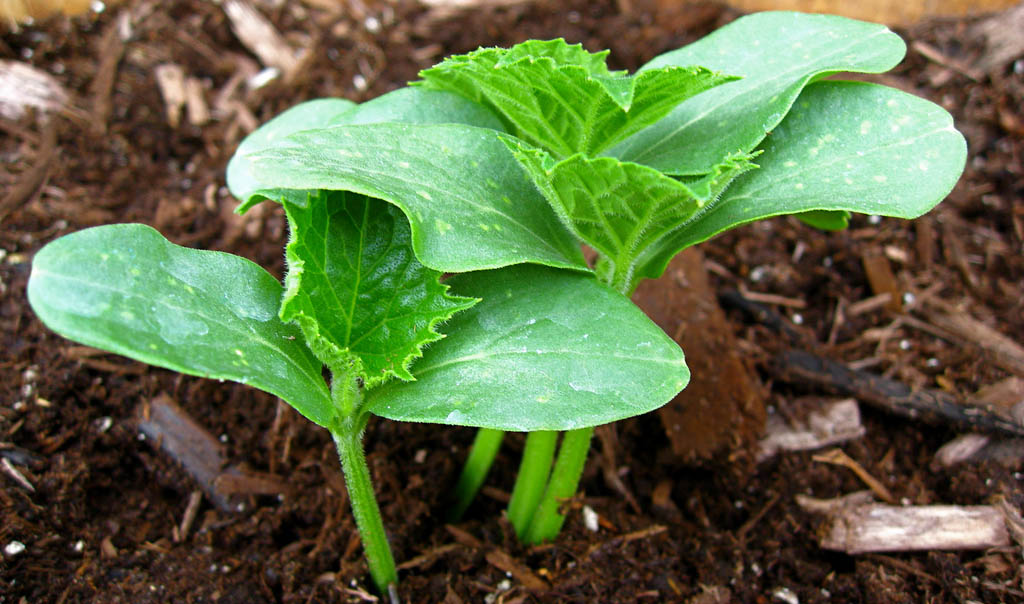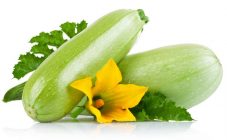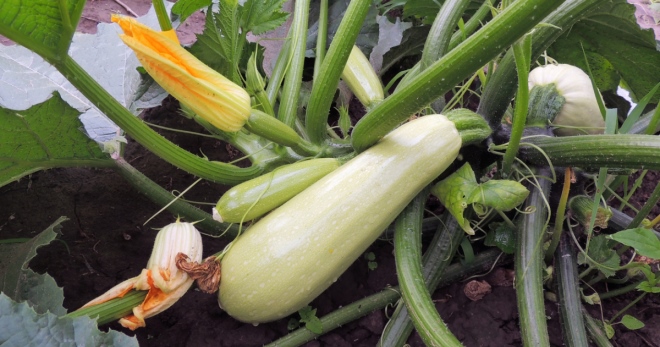Content:
Planting zucchini takes a long time, these plants love moisture and proper care. To get a high-quality crop, it is necessary to water the crop on time. The soil should be moistened according to certain rules, since in each period of growth, plants require a certain irrigation scheme, a suitable water temperature and a correctly selected amount of moisture. It is worth figuring out how often to water zucchini in the open field at each stage of culture development.
Watering features
Watering zucchini plays an important role in growing vegetables. If the summer resident is able to water the plants on time, then he will receive a rich and large harvest. There are features of this procedure that are recommended to be followed in order not only to increase yields, but also to protect the plant from diseases:
- Watering with cold water should not be done, as this will negatively affect the zucchini. It is better to use a liquid with a temperature of at least +10 degrees.
- The culture responds well to the use of settled water that has been slightly warmed up by the sun.
- When watering beds on a cloudy and rainy day, it is best to warm up the liquid so that it is warm enough.
If the gardener is able to monitor the temperature regime, then you can save the zucchini from problems such as:
- spotting brown;
- fusarium;
- powdery mildew;
- all types of rot;
- anthracnose.
If the summer is characterized by dry weather, then it is better to moisturize at least once a week. When the weather is rainy, watering should be done if the soil is 3 centimeters dry. This option is only suitable for already mature plants.
How to properly water zucchini in the open field
Irrigation rates depend on the region of the country where the vegetable crop is planted. But there are general watering norms that gardeners should adhere to. The volume of liquid is calculated based on certain indicators:
- the soil substrate consists of a granulometric composition;
- the required depth of soil moisture;
- the soil moisture level set before irrigation;
- irrigation method.
If there is no precipitation for a long time, it is necessary to bring the maximum amount of liquid to the landing site. The time of fruiting and flowering is especially important; during this period, irrigation is carried out most often. It is especially important to moisten the ground on hot days, while the soil should be moistened to a depth of 0.2 meters.
Proper watering is required immediately after the ovaries appear on the bushes. During this period, the site is irrigated at least once a week, it is impossible to allow the soil to dry out too much. Zucchini watering in August is carried out in accordance with weather conditions. For irrigation, settled water is used, which is warmed up in the sun. It is not advisable for drops of water to hit the deciduous part, otherwise it may burn.
Watering schedule for young plants
When the sprouts are planted in the ground, the gardener must properly water these plants. It is on the amount of moisture, as well as on the water used, that the yield in the fall will depend. Zucchini should be watered after young shoots have taken root, if seeds have been planted in the ground, they must first sprout. Depending on weather conditions, the crop is irrigated every 5-7 days. At the same time, watering is carried out abundantly so that the soil is moistened 20-30 centimeters deep.
About 10 liters of purified water is used per 1 m². This scheme is applicable until the ovaries appear, it turns out that no more than 3 liters of liquid are used per bush. With the beginning of fruit formation, the volumes increase by 2 times. In order for the culture to grow and develop more actively, it is recommended to moisten the soil with warm water, the temperature of which is more than 20 degrees. If it is not possible to heat the water, you can irrigate the soil in the evening by placing several buckets of water in the sun.
It is not worth overheating the water, this will lead to heating of the root system, which, after cooling, will slow down growth. As soon as watering is completed, it is imperative to mulch with humus so that the soil remains moist longer. On dry days, watering is increased up to once every 2-3 days, depending on the rate of drying out of the earth. On cold days, the amount of moisture should be reduced, here irrigation should be carried out no more than once every 10 days.
under the root carefully.
During flowering
How to water zucchini in the open field if the flowering period has come? Many continue to irrigate according to the old scheme, which can lead to a lack of moisture. If buds have formed on the culture, then it will need irrigation every 3-4 days. It is important to observe not the frequency of watering, but the amount of liquid used. One plant will require at least 10 liters. Moisture must penetrate to the roots of the plant, and not only wet the soil surface. If there is not enough moisture, this can lead to the following problems:
- large numbers of male flowers form on the bushes, vegetables do not grow from them;
- the juiciness of the pulp becomes less, the development of the plant slows down, the ovaries begin to fall off;
- the deciduous part turns yellow, curls and dries up.
During the heat
Vegetable growers are interested in how much moisture is needed in order for the plant to receive a sufficient amount of nutrition and liquid during hot periods. In sunny and dry weather, it is recommended to irrigate the site at least once every three days. Otherwise, the yield will be lower than the gardener needs. At the same time, in different periods, watering is carried out in different quantities. Young seedlings during drought require about 1-2 liters per plant, while older shrubs need more watering, about 3 liters per shrub.
Abundance of watering
The amount of moisture used also plays a role, in this case, normal weather, with moderate rainfall and frequent sunny days, will be considered. According to experts, 1 m² requires about 12 liters of settled and warm water. About 2-3 liters are used for one adult bush. Younger sprouts require less moisture, as their root system is underdeveloped and they do not require much moisture. During the flowering period, irrigation is also carried out at 2-3 liters per plant, this should be done every 7 days.
Watering with top dressing
Fertilizing the culture is very important. This can be done at the stage of emergence of sprouts, as well as during the flowering period. Top dressing saturates the soil with useful trace elements and substances that penetrate into the plant and help them accelerate growth and development.For those vegetable growers who are looking for how to water the zucchini so that there are more fruits, simple solutions will be given.
Experts recommend feeding the crop 14 days after planting the seedlings in the ground. This will be the first fertilization. It is best to use mineral formulations, but you can also turn to organic substances. Zucchini differ from other plants as they require additional feeding during the entire growing season. It is especially important to apply fertilizer when the vegetable crop begins to bloom.
During the ripening period, drugs that are suitable for foliar feeding should be used, that is, they are used on a leaf. An insufficient amount of nitrogen will affect the appearance of the fruit: the zucchini are stretched and have pale tips. If the fruits are spherical, this indicates a lack of potassium in the soil. To avoid such a problem, it is recommended to introduce complex supplements on time and constantly.
It is better to refuse watering with such solutions in the daytime, as this will lead to burns of the deciduous part of the crop and fruits. Water droplets collect and concentrate the sun's rays, which leads to disastrous consequences. Also, you should not irrigate the soil with foliar applications if the solution is not intended for sub-root administration. The concentration of substances can negatively affect the state of the foliage, and burns will appear on the plant. It is better to carry out such a procedure in the evening, when the sun has already set. You can also choose rainy days, the soil in this case will be moistened and you can additionally protect the zucchini from damage to the root system.
A few tips for watering
Zucchini is a heat-loving plant, this must be taken into account during watering. There are several rules that gardeners and vegetable growers should pay attention to when growing vegetables:
- if the plant has drooping leaves, this may indicate an insufficient amount of moisture in the soil, the amount of irrigation should be increased;
- before you start moistening the soil, you should collect water in barrels or buckets and leave in the sun until the evening - this will allow the water to warm up to the optimal temperature;
- it is forbidden to use cold water from a well or well for irrigation - this will lead to a halt in the development and fruiting of the culture;
- the procedure should be carried out in the evening and early morning, when there is no sun;
- watering should be carried out strictly at the root, if after irrigation of the soil, the roots of the culture appear on the surface, they should be sprinkled with humus and earth;
- it is necessary to use mulching, since the procedure protects the plants from drying out, prevents weeds from developing, and also enriches the soil with necessary substances.
Watering plays an important role in the cultivation of squash, the future harvest depends on it. Based on the foregoing, we can conclude that plants do not require frequent, but abundant watering. During flowering and fruiting, the amount of irrigation is increased, as is the volume of liquid used.
